For the HOA board members striving to master the intricacies of reserve expenses, let’s dive into the guiding forces behind it. Understanding how reserve expenses are determined will empower you, your association, and its financial well-being. So, let’s take this journey guided by the very principles that define your HOA’s reserves.
The Role of Your HOA Reserve Study
Reserve studies are pivotal. They dictate reserve expenses, pinpointing what projects will emerge, their timeline, and projected costs. But, there’s often a looming question: How genuine are these predictions? How do we ensure we’re not simply meandering in the dark?
The answers lie in the guiding principles of component selection.
These are comprised of:
- Your HOA’s Governing Documents
- State Laws
- National Reserve Study Standards
Adhering to these ‘rules of the road’ assures a comprehensive component list, thereby diminishing chances of unforeseen financial shocks as damages and deterioration occur.
The 3 Keys: Planning, Maintenance, & Inspections
Fundamentally, reserves are about reserve planning – your plan to have the right cash set aside. Having the right amount, at the right time, ensures timely project completions. But Reserve Planning is only one element in the wheel of HOA reserve success.
It’s complemented by:
- Preventive Maintenance: Regular, smaller projects keeping the building up to standard
- Infrastructure Inspections: Specialized checks identifying concerns missed in reserve assessments
This triad synergistically ensures comprehensive building care so your reserve expenses are determined with the best outcome possible. It’s not just about replenishing your association, but also sustaining and diagnosing potential problems.
The National Reserve Study Standards
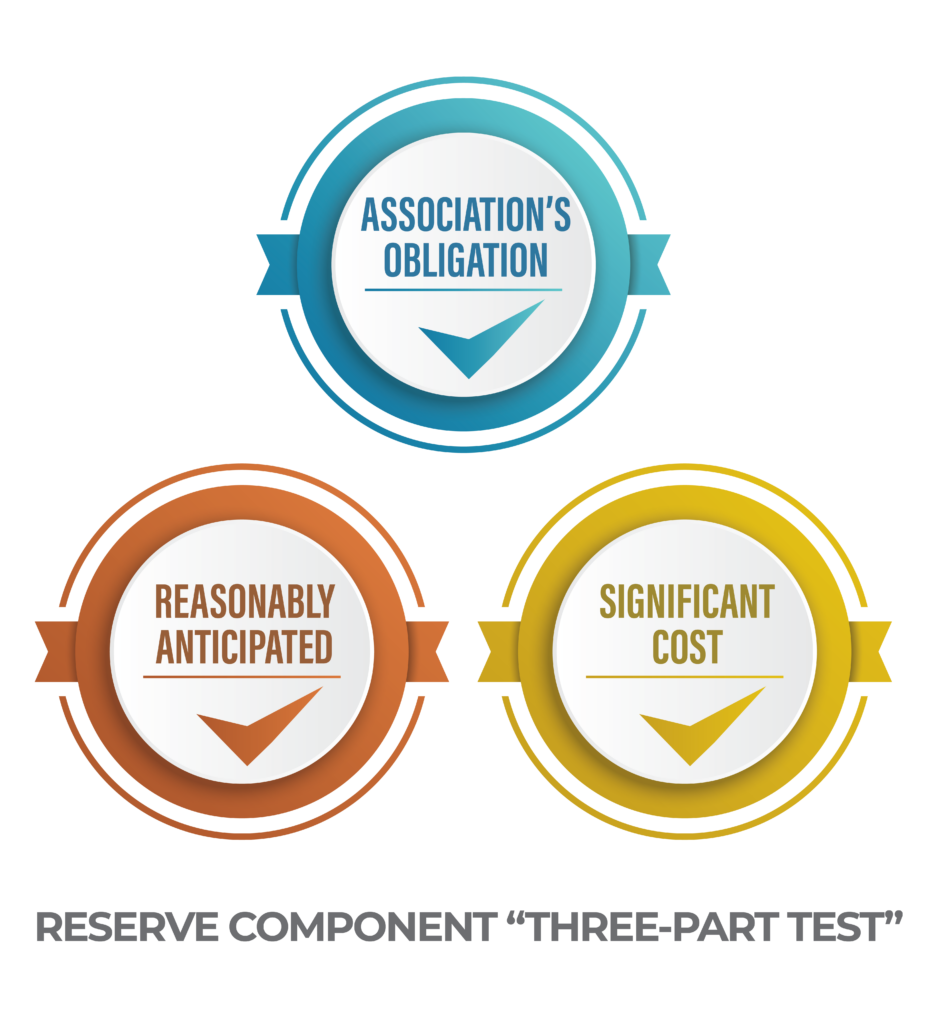
First established in 1998, these standards offer a three-part test (formerly four-part test) to determine proper HOA reserve funding:
- It should be the association’s obligation, a common area assigned to the association
- The remaining life should be reasonably predictable or anticipated
- Must be a significant cost
Here, understanding current costs is paramount. These costs are all-inclusive, accounting for various facets like inflation, shipping, design, permits, installation, and disposal.
Navigating State Laws & HOA Governing Documents
Local laws and your HOA’s governing documents provide specificity. They demarcate the boundaries of ‘common areas’, defining what the association is responsible for, the developer’s responsibility, and the owners’ responsibilities. Compliance with state laws are typically met properly when adhering to National Reserve Study Standards. To learn more about how local laws can affect HOA rules, check out this article here.

Reserve Expenses are…
Proper reserve expenses are about planning for the predictable. They are the association’s financial responsibility and are too large for the operating budget to easily absorb. It’s striving for a balance where big, foreseeable projects are accounted for, ensuring they don’t shock the system when they come around. Think of a roof: its degradation over 20 years shouldn’t be a surprise, rather an anticipated expense you’ve had two decades to prepare for. But what are the metrics? Who defines these reserve expenses? How do they balance preparing for the future without unduly pressurizing the present?
How Reserve Expenses are Determined
To the untrained eye, crafting a reserve study for an HOA might seem like a few clicks on a mythical website that churns out numbers. However, in reality, it’s a culmination of painstaking research, networking, and hands-on experience. If you’ve ever wondered how the reserve expenses in your HOA’s reserve study are determined, now is the time to find out.
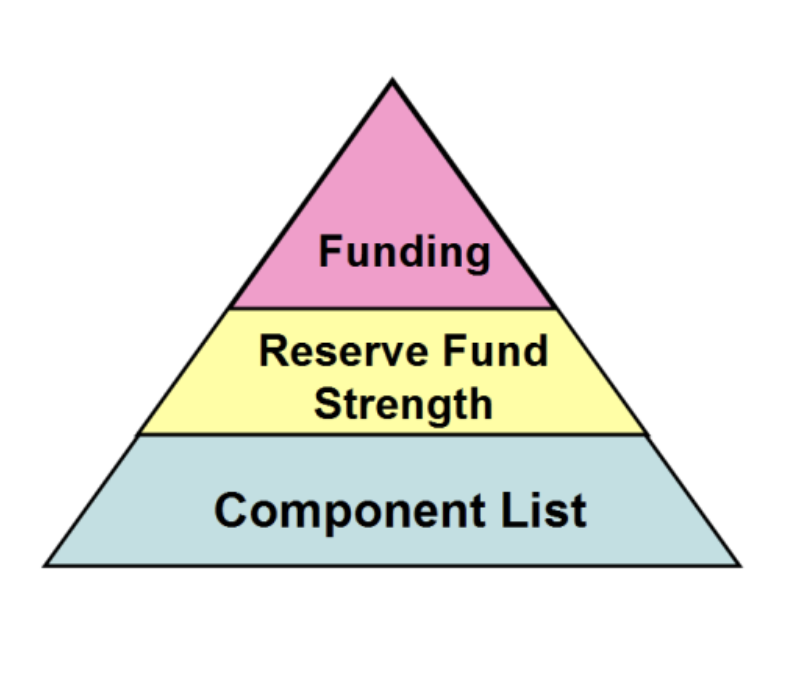
Reserve Study Myth v.s. Reality
There’s a prevalent myth out there: Reserve study providers finish site inspections, relax with a cup of coffee, and then, in the last few moments, punch in a few numbers into a magic online tool that instantly prepares the reserve study. In reality, the results you see on paper are born out of hours of meticulous work, networking, and, most importantly, the trained eye that understands the unique features of each community.
How Reserve Study Providers Get Your Reserve Expenses
While digital tools have made their way into most professions, there’s no replacing the value of firsthand experience and networking. Our job doesn’t end when we leave a property after an inspection – it’s only beginning.
The goal is to piece together a vivid narrative: What was done? Who did it? When? Why? And for how much? Here we are collecting clues to provide you with the most accurate information possible.
A significant chunk of the life and cost information in your reserve study is derived from other associations in your vicinity that have recently undertaken projects. By comparing these figures to your community’s specifics, we offer tailored advice and estimations. While many reserve study providers rely primarily on their local body of experience, it’s not uncommon to supplement with national cost guides, localized by zip codes. It’s always a good practice to ask your reserve study provider about the sources of their estimates.

Trade shows are also a goldmine of information. Conversations with vendors – from paving companies to air conditioning specialists – provide insights into current life expectancies of materials, how supply chain issues might be affecting costs, and more. It’s an ongoing process of learning, understanding market dynamics, and adapting this knowledge to serve associations like yours better.
No HOA Reserve Expenses are Made the Same
Each community is unique. Its environment, usage, size, access, and even choice of materials can affect the costs and life expectancies of projects. For example, while one association might be able to use a particular roofing material because of its dry climate, another might need something different due to higher humidity levels.
Consider these adjustments:
Installation: Were there installation issues last time? And if so, what issues might we run into this time?
Size: Small quantities that might make things more expensive, or huge quantities where you get economies of scale
Obstacles: Are there obstacles like nearby trees, slopes, or bodies of water?
Materials: What materials are most suitable given the property’s location, climate, and other factors?
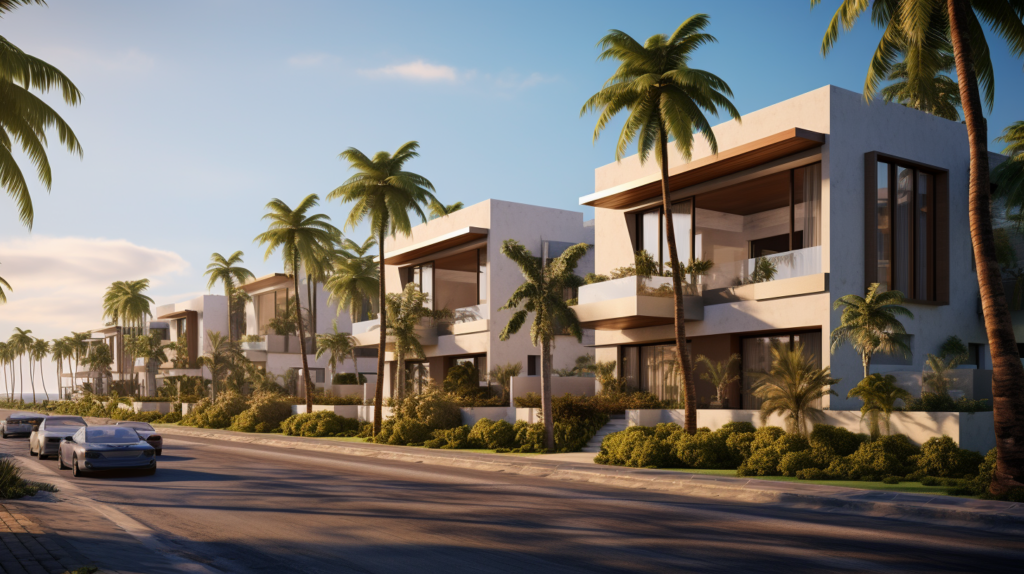
Not Just Reserve Study Numbers
Understanding reserve expenses is crucial for every HOA board member. It’s not just about numbers but about securing the future of the community, ensuring timely maintenance, and making informed decisions. Remember, it’s more than just math; it’s about building a sustainable future for your association.
So, the next time you hold your reserve study in hand, know that it’s a reflection of old-fashioned diligence, expertise, and a genuine commitment to serving your community’s best interests. And always feel free to ask questions – it’s your right as an HOA board member to understand the intricacies behind the numbers. If you want to learn more about your reserve study report, how to communicate the numbers, and what your HOA should do next with your results, click here.
What You Should Know About Component Lists
Every homeowner association is unique, and so is its financial future. Another essential element that drives good financial health in a community is understanding the importance of having an accurate “reserve component list”.
Have you ever wondered why your HOA might suddenly be caught with an unexpected huge bill? It’s likely because they weren’t adequately prepared for. But how do you equip yourself for costly unforeseen circumstances?
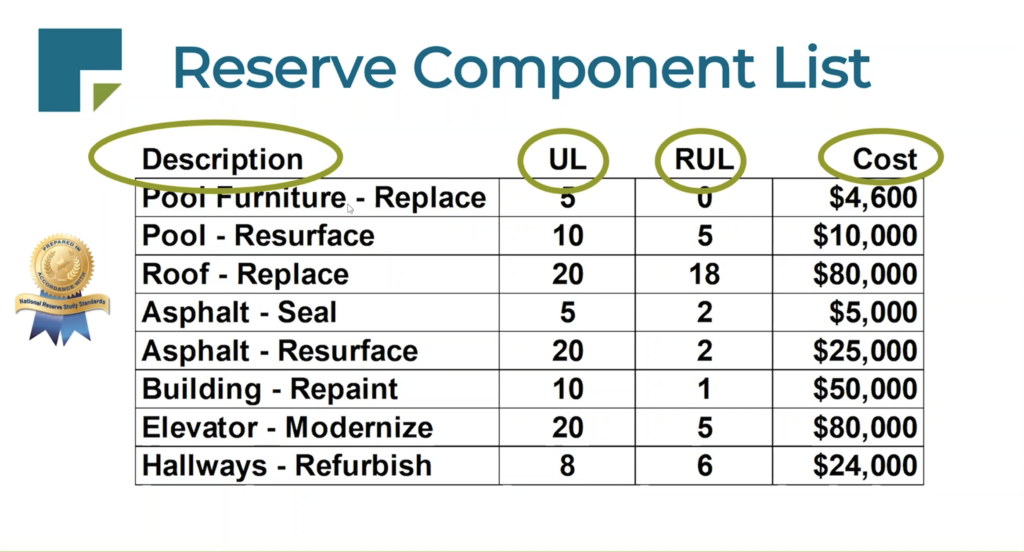
Types of HOA Component Lists
Let’s take a look at what makes up a reserve component list for different types of residences: townhomes, mid-rise condos, and high-rises. These are not just lists, but a roadmap to the future expenses an HOA will incur.
Townhomes: These typically include elements like decking, fences (both metal and wood), landscaping, and even tree trimming. For instance, while metal fences might last up to 40 years with regular painting, something like a tree might need trimming every couple of years.
Mid-Rise Condos: Here, you might find expenses for perimeter fencing replacement, infrastructure inspections, and building interiors, among others. One key aspect we noticed was the cycling of repairs. A building might get its exterior painted every five years, but its interior might be on a different cycle.
High-Rises: These can get a bit more complex with elements like tennis courts, chain link fences, lobby upgrades, and mechanical systems to think about. The financial landscape for a high-rise can be intricate, especially when you factor in elements like balcony inspections or infrastructure checks.
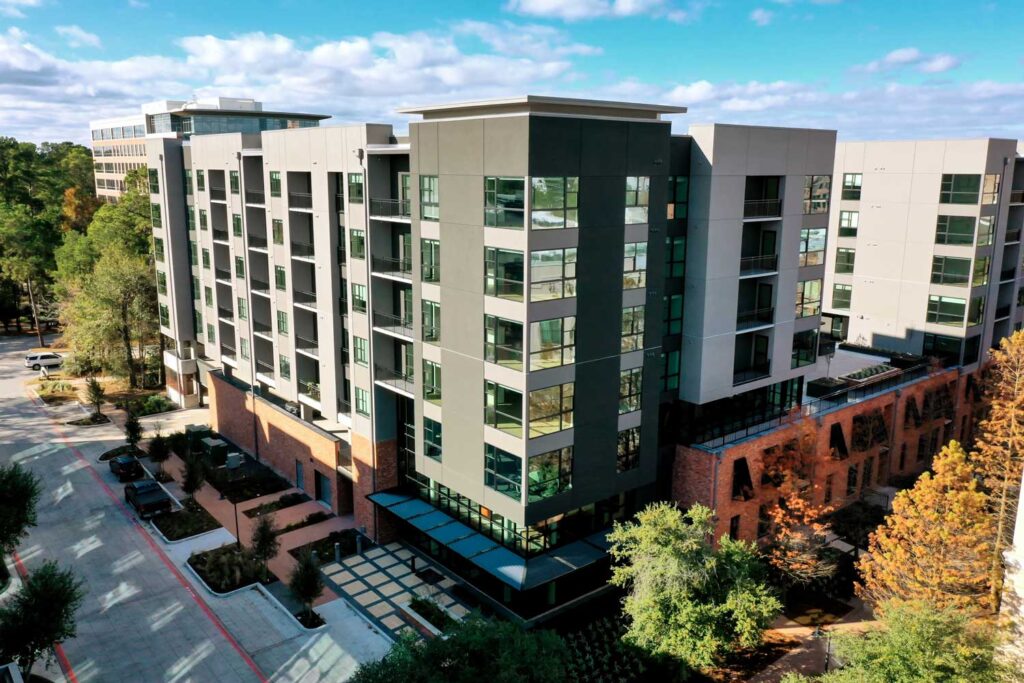
What Your Component List Does
By National Reserve Study Standards, a detailed component list doesn’t just give you an inventory. It is a strategic tool that provides HOA project managers with:
Time: It gives you the foresight to see when a particular component might need replacement or repair. This lets managers and board members plan ahead, avoiding the rush and chaos of unexpected reserve expenses.
Financial Preparedness: Knowing an expense is on the horizon, HOAs can start allocating funds towards it. Imagine not having to stress about a leaky roof because you’ve already been saving up for its inevitable repair!
A Comprehensive View: With tools like uPlanIt, not only do you get a digital view of your reserve study, but you can also dive deep into each component, see its life cycle, cost, and even adjust and test funding plans as necessary. This level of customization allows for a more accurate financial forecast and gives you the power to see what will work for your association and what won’t work.
The Trust Cost of Unpreparedness
It’s not just about the money. When an HOA is unprepared for big-ticket repairs or replacements, it’s not just the reserves that take a hit. The emotional and financial stress on board members and homeowners can be immense. This is why understanding the reserve component list is crucial.

To all HOA board members reading this: Take the time to understand your reserve components. Utilize planning tools like uPlanIt and ensure your HOA is financially prepared for the future. Remember, it’s not just about avoiding unexpected costs, but ensuring a peaceful and secure living environment for all residents.
Reserve Expenses Don’t Last Forever
1. Time and Nature: The two elements that never cease their inexorable march. ‘Mother Nature’ can decide to unleash a torrential downpour, revealing that your property’s roofing isn’t up to par. Or perhaps ‘Father Time’ decrees that certain components within the community won’t last as long as expected. Their impact? Even the best laid plans for your HOA can go awry.
2. Changing Needs: Every community evolves. The demographic might shift from young families to senior citizens, and with it, the wear and tear on facilities. For instance, a playground might see less rigorous activity if populated with older residents, but the hallways might need a revamp to prevent potential accidents.
3. Economic Environment: Beyond just inflation, the larger economic environment plays a pivotal role. Supply chain disruptions, for instance, could make elevator parts scarce, urging an HOA to expedite its elevator modernization plans.
4. Reserve Balances and Priorities: As the years go by, the actual expenses and maintenance tasks undertaken might vary from what was initially projected. This will alter the reserve balance and possibly the list of priorities. Maybe that tennis court revamp can be pushed back a few years since fewer residents play tennis now. Or maybe it’s more crucial than ever because of newfound interest.
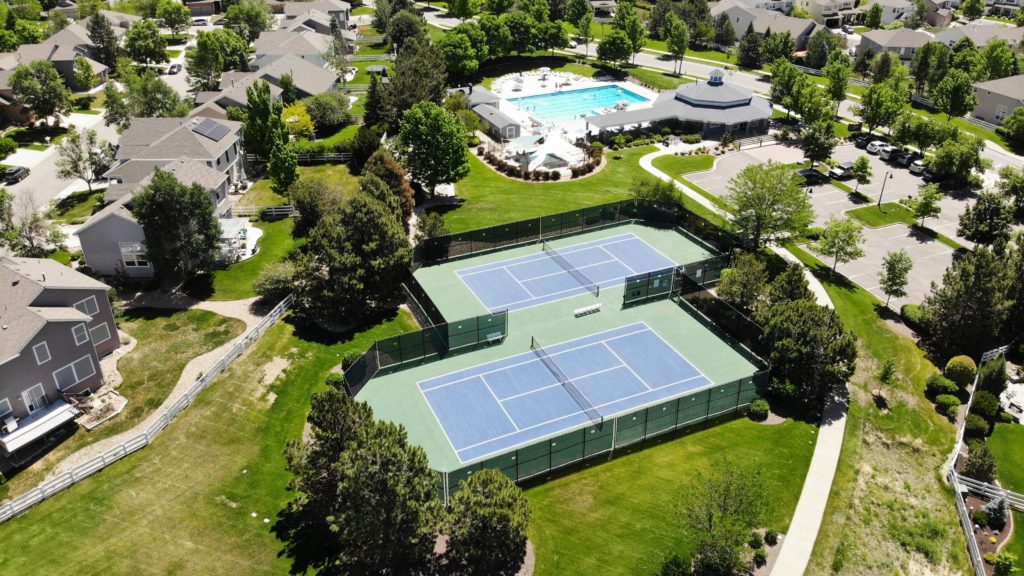
Why Work with a Reserve Study Provider
Working with a professional reserve study provider can make this adaptive process more manageable. They can guide you through the edits necessary based on your current circumstances. Maintaining detailed documentation of all reserve-related activities and expenses will also be invaluable. This way, when changes happen (and they will), you’ll be prepared every time, ensuring your community thrives and residents remain satisfied.
The Real HOA Challenge
Every HOA is as unique as a fingerprint. Varying amenities, distinctive weather challenges, and the visions of the board members all contribute to that uniqueness. However, despite the many differences, a singular truth remains: every property is steadily marching towards wear and tear. If you serve on an HOA board or are a community manager, neglecting to plan for inevitable reserve projects is a pathway to significant financial setbacks and community discontent. Here’s why.
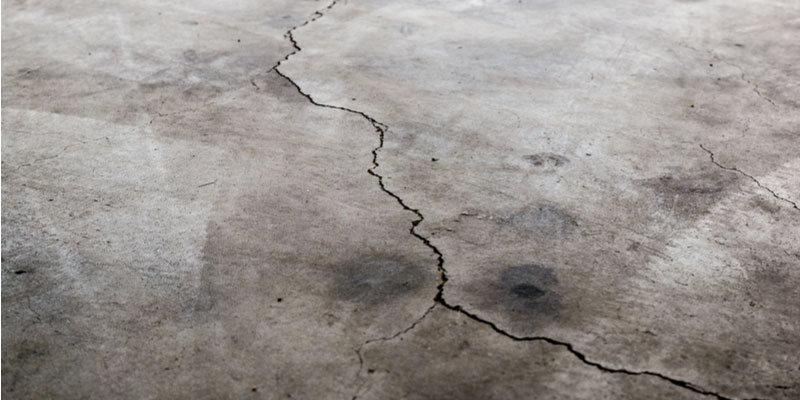
Deterioration is Expensive: Don’t Ignore It
Your reserve funding is fundamentally shaped by the projects looming on the horizon. When will they happen? How costly will they be? And most importantly, are you prepared for them? Every property, regardless of its location or type, will experience deterioration. This isn’t a maybe; it’s a certainty. Those who choose to brush this aside are setting themselves up for a hefty financial toll. The projects on your “to-do list” will materialize, and when they do, they won’t be cheap. Every association has its distinct blend of challenges. But if there’s one mistake you shouldn’t make, it’s believing that ignoring these challenges will make them vanish.
Reserve Expenses and Board Members
Unfortunately, many associations transform into chaotic, deteriorating, and disorganized atmospheres. But it doesn’t have to be this way. The power of making informed decisions lies with the board. Recognizing the importance of regular maintenance, understanding the specifics of your reserve study, and being proactive in addressing HOA reserve expenses can be the difference between a thriving community and one on the brink of financial turmoil.

How to Keep Your Association Safe
The heartbeat of a thriving HOA is its ability to anticipate, adapt, and act. And in this journey, updating your reserve study isn’t just an option; it’s a necessity. Stay informed, stay flexible, and ensure that your community is always prepared for whatever time and nature have in store. Every component of the study, from cost predictions to the very list of what needs attention, is subject to change based on real-world developments. Now that you understand what gets funded with reserves, learn more about HOW to fund those reserves for your community here.
A reserve study isn’t merely a recommendation – it’s a cornerstone for the financial health and longevity of your HOA. As board members or managers, the decisions you make about your property’s reserve components are the bedrock of your entire reserve plan and reserve expenses.
With Association Reserves by your side, you have access to a wealth of resources and information. We’re here to assist you every step of the way. Check out the rest of our resources here, or subscribe to our YouTube channel to follow along on future HOA tips like this every week!

